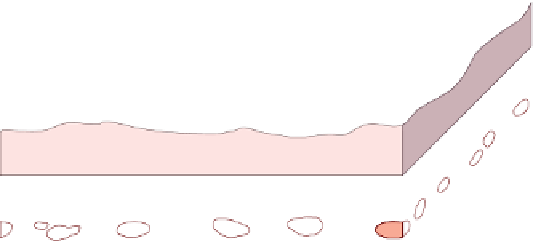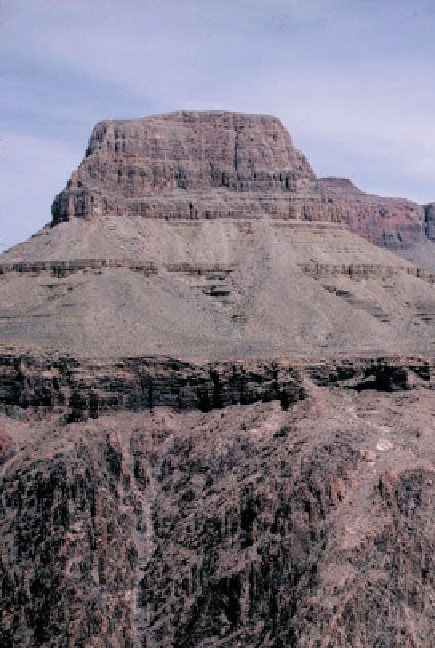Geology Reference
In-Depth Information
◗
Figure 17.10
Formation of a Nonconformity
Deposition
Nonconformity
Paleozoic
sedimentary
rocks
Uplift and erosion of overlying sediments
Nonconformity
Intrusion of magma
a
Formation of a nonconformity.
To decipher Earth history, geologists must demonstrate the
time equivalency of rock units in different areas. This pro-
cess is known as
correlation
.
If surface exposures are adequate, units may simply be
traced laterally (principle of lateral continuity), even if occa-
sional gaps exist (
Precambrian
metamorphic
rocks
b
Nonconformity between Precambrian metamorphic rocks and
overlying Paleozoic sedimentary rocks in the Grand Canyon, Arizona.
Figure 17.13). Other criteria used to cor-
relate units are similarity of rock type, position in a sequence,
and key beds.
Key beds
are units, such as coal beds or volcanic
ash layers, that are suffi ciently distinctive to allow identifi ca-
tion of the same unit in different areas (Figure 17.13).
◗
Generally, no single location in a region has a geologic
record of all events that occurred during its history; there-
fore, geologists must correlate from one area to another
to determine the complete geologic history of the region.
































































































































Search WWH ::

Custom Search